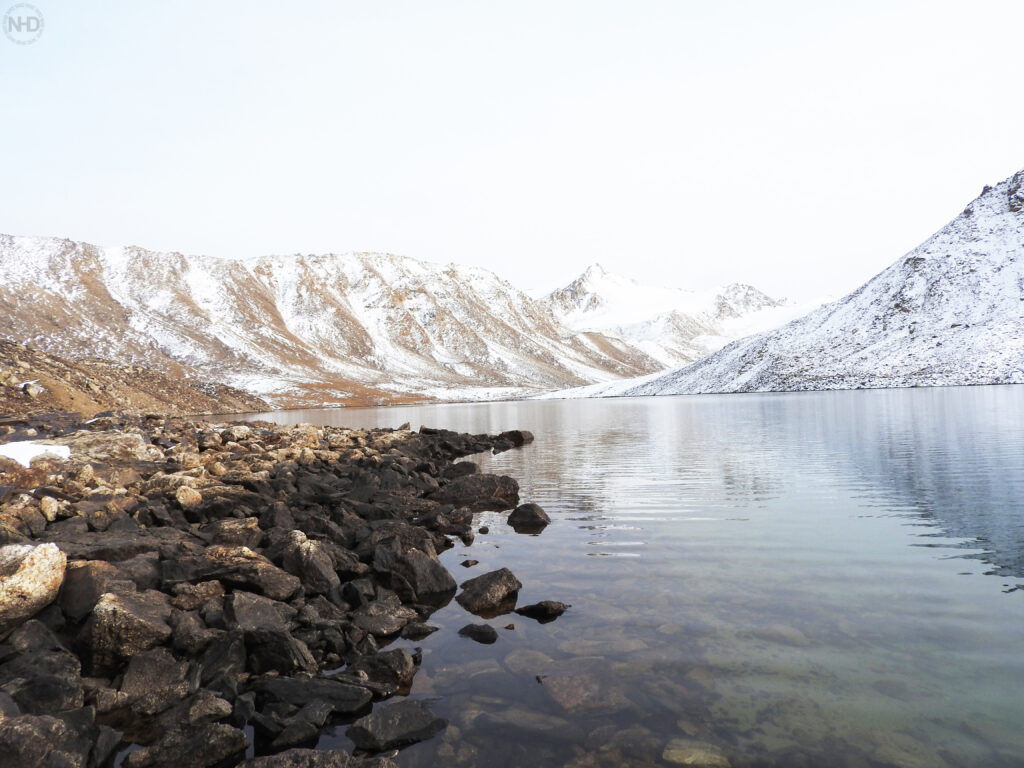Short communication: Irrigation efficiency improvement reserve in Central Asia compared to Israel
Khaydarov A.a*, Petrov G.b, Mitusov A.c
a Tashkent Institute of Irrigation and Agricultural Mechanization Engineers, st. Kari Niyazova, 39, Tashkent,
100000, Uzbekistan
b Center for Innovative Development of Science and New Technologies of the National Academy of Sciences of
the Republic of Tajikistan, 33 Rudaki Ave., Dushanbe, 734025, Tajikistan
c Kazakh-German University, st. Pushkin, 101, 050010, Almaty, Kazakhstan
E-mail: khaydarov.aziz@inbox.ru
G. Petrov: geomar@bk.ru, A. Mitusov: a_mitusov@mail.ru
https://doi.org/10.29258/CAJWR/2022-R1.v8-2/102-109.rusShort communication

Abstract
The paper aims to assess the reserves of water conservation in irrigated agriculture in Central Asia (CA) compared with Israel. We compared specific water consumption, precipitation, and evapotranspiration indicators during the growing season. The article shows that taking into account the above parameters, the actual difference in water consumption between Israel and the countries of Central Asia is only 21.4% of the real irrigation rate. It is the limiting value; in reality, the reserves are even less since evapotranspiration from the main irrigated areas is slightly higher than the average in Central Asia. In addition, large volumes of water are spent on leaching saline lands in Central Asia
Available in Russian
Download the article (rus)For citation: Khaydarov, A., Petrov, G, Mitusov, A. (2022). Rezerv povysheniya effektivnosti orosheniya v Central’noj Azii po sravneniyu s Izrailem: kratkoe soobshchenie [Short communication: Irrigation Efficiency Improvement Reserve in Central Asia Compared to Israel]. Central Asian Journal of Water Research, 8(2), 102–109. https://doi.org/10.29258/CAJWR/2022-R1.v8-2/102-109.rus [In Russian]
References
Abduraimov, M.F. (2017). Problemy Zarafshanskogo gidrograficheskogo bassejna [Problems of the Zarafshan hydrographic basin]. NGO “Protection of the Zarafshan River Basin”, Tashkent. [in Russian]
Agaltseva, N. A. (2002). Ocenka vliyaniya klimaticheskih izmenenij na raspolagaemye vodnye resursy v bassejne Aral’skogo morya [Assessment of the impact of climate change on available water resources in the Aral Sea basin]. Dialogue on Water and Climate: Case Study of the Aral Sea Basin. Tashkent, ICWC Scientific and Information Center. pp. 3-59. [in Russian]
Agency for Melioration and Irrigation under the Government of the Republic of Tajikistan (2018). Land irrigation. Retrieved 20.06.2022. https://www.alri.tj/ru/land-irrigation [in Russian]
Basin Water and Salt Balances and their Implications for National and Regional Planning (2002). Joint Report No. 2 (final) for GEF Agency of the IFAS ARAL SEA BASIN PROGRAM. Water and Environmental Management Project. Sub-component A1, National and Regional Water and Salt Management Plants. Royal Haskoning. http://www.cawater-info.net/library/eng/reports/report2002.pdf
Interstate Council on the Problems of the Aral Sea (1996). Main provisions of the water strategy of the Aral Sea Basin. Book 1. Alma-Ata, Bishkek, Ashgabat, Tashkent. 209 p. Available in the SIC ICWC Archive.
Khaidarov A.R. (2021). Comparative analysis of water use efficiency in arid regions in cooperation between farmers and university researchers on the example of Israel and Uzbekistan. Master’s thesis, KNU. 54 pages 11.
Legislation of Uzbekistan (2020). Concept for the development of the water sector of the Republic of Uzbekistan for 2020-2030. Appendix N 1 to the Decree of the President of the Republic of Uzbekistan dated July 10, 2020 N UP-6024.
Official information resource of the Prime Minister of the Republic of Kazakhstan (2021). In Kazakhstan, by 2030, the area of irrigated land will be increased to 3 million hectares – S. Brekeshev. Retrieved 20.06.2022. https://primeminister.kz/ru/news/v-kazahstane-do-2030-ploshchad-oroshaemyh-zemel-budet-dovedena-do-3-mln-ga-s-brekeshev-5996
Orlovsky, N. S., Zonn, I. S. (2018). Vodnye resursy Izrailya: opyt osvoeniya [Water resources of Israel: experience of development]. Problems of the Post-Soviet Space, 5(1), 8-36. DOI: 10.24975/2313– 8920–2018–5–1–8–36. [in Russian]
Petrov, G. (2010). Conflict of interests between hyrdopower engineering and irrigation in central asia: causes and solutions. Central Asia and the Caucasus. 11(3). 52-65
Petrov, G., Akhmedov M. (2019). The conflict between hydropower and irrigation in the joint use of water resources of transboundary rivers in the aral sea basin. Central Asia perspectives and challenges, Nova., 126 p.
Saipov, B., Askaraliev, B. O., Sadabaeva, D. K., Drugaleva, E. E., Omurzakov, K. E., Isaeva, A. D., Askaraliev, T. (2018). Innovacionnye tekhnologii orosheniya [Innovative irrigation technologies]. Bulletin of the Kyrgyz National Agrarian University. KI Scriabin, (4), 106-113. [in Russian]
Stanchin, I. M. (2017). Vodnye resursy i vodopol’zovanie v Turkmenistane: istoriya, sovremennoe sostoyanie i perspektivy razvitiya (okonchanie) [Water resources and water use in Turkmenistan: history, current state and development prospects (End)]. Synergy, (1), 83-95. [in Russian]
UN Report: Strengthen Climate Change Adaptation or Face Huge Challenges (Glasgow, 4 November 2021). Accessed 15.09.2021. https://www.unep.org/ru/novosti-i-istorii/press-reliz/doklad-oon-usilit-mery-adaptacii-k-izmeneniyu-klimata-ili-stolknutsya
Water data Portal (2021). IWMI Water & Climate Atlas. Date of access: 09/12/2021 http://waterdata. iwmi.org/pages/Products.php
Central Asia, evapotranspiration, irrigation, Israel, water saving